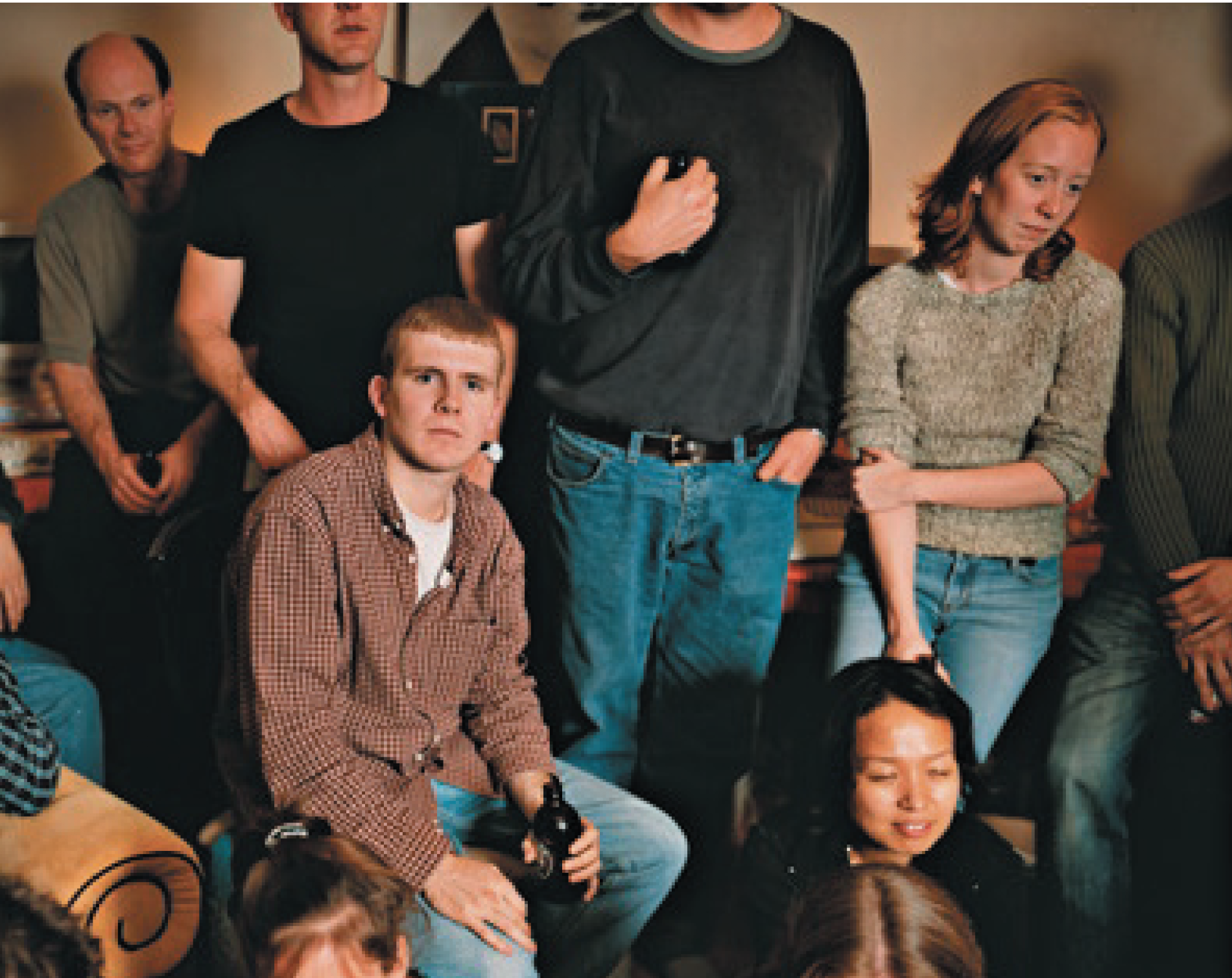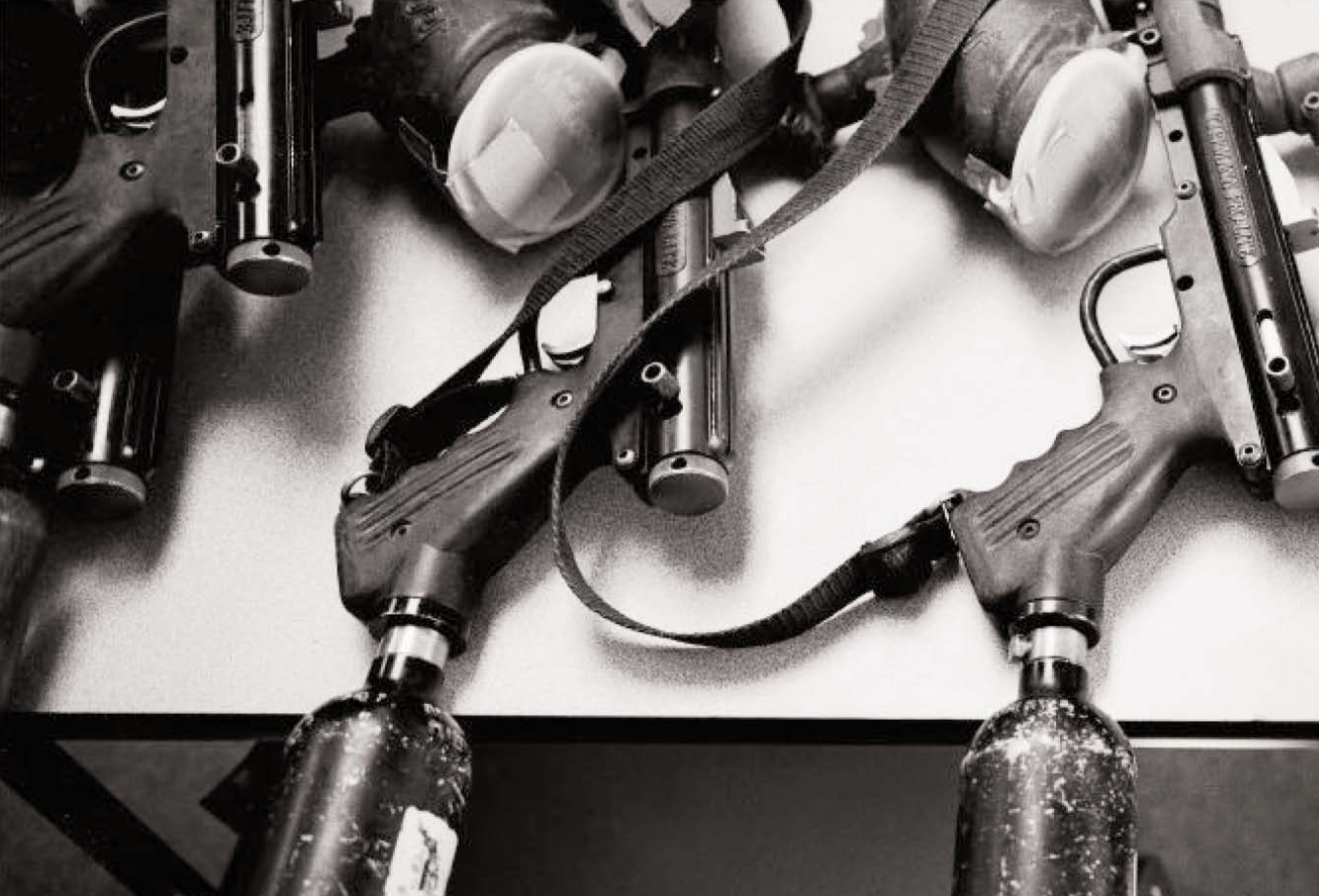Why Successful Young Men Commit Suicide

DETAILS MAGAZINE
NOVEMBER 2004
Photograph by Jim Goldberg
Cancer and heart disease used to be our biggest fear. Turns out we are our own worst enemy.
AMES PARKER LIKED THE GOOD LIFE. A HANDSOME SALESMAN WHOSE COMPANY PROVIDED MEDICINE FOR TERMINALLY ILL SHUT-INS, HE SPLURGED ON Hugo Boss at Neiman Marcus, drove an E-Class Mercedes, and collected antiques and art. He threw lavish Christmas parties at his Dallas mansion, which was occasionally featured in national magazine spreads.
But on September 15, 2000, Parker had a very bad day. That morning, his sister confronted him about the cost of his extravagant lifestyle. (Although he was earning more than $100,000 a year, he was in debt for three times that amount.) At work, he discovered a damning performance review that he thought was about him (it was actually about a predecessor),and he left the office convinced he would lose his job.He returned home to find that his longtime relationship was in shambles.He felt utterly hopeless.
That night, Parker, 37, who earlier that day had filled the gas tank of his black Mercedes and bought the lottery ticket that he hoped would solve his troubles,as he did every week, drove to a nearby park. There, with the Dallas skyline before him, he took the shotgun his father had given him and wedged it against the windshield and shot himself through the heart.
“He had this fear of having his finances exposed,” says his sister, Andrea. “He was used to being a success. I think the final thought going through his mind was this sense of entitlement.If he couldn’t live the way he deserved,as a success, then life wasn’t worth living.” Parker’s story is all too common. Every 17 minutes, someone in this country picks up a gun, a knife, a rope, a handful of pills, and takes his own life. White males make up the largest share—73 percent—of the victims. Most alarming are the statistics on young men: For white males ages 21 to 39, suicide is the second leading cause of death, after accidental injuries (for young black men it is the fifth-leading cause of death). Typically fit and healthy, these young men may not be as prone to cancer or heart disease as their fathers, but they are dangerously susceptible to
their own dark feelings.
Most of these men—and up to 90 percent of all suicides—suffer varying forms of substance abuse, depression, or personality disorders, but more than half of all depressed men have never been diagnosed. Many of them are hard drinkers and recreational drug users, which may contribute to impulsive behavior. Even some of the most charismatic in our midst can feel isolated, despondent, and burdened by the effort of keeping up the façade. As it turns out, one of the biggest risk factors for suicide is simply being a man: “When suicide gets on the brain, the problem with males is that they have not been acculturated to seek help, to assume a dependent position,” say Dr. Lanny Berman, who helped perform the “psychological autopsy”—afterthe-fact interviews and research to learn more about a suicide’s motivations and mental health—on Clinton White House aide Vince Foster, and is executive director of the American Association of
Suicidology, a nonprofit group in Washington, D.C., that promotes suicide research and education.
Nowhere is the macho code more evident than in the pressure-cooker offices of Wall Street, Washington, and Hollywood, where the strain can push the most vulnerable over the edge. And a growing phenomenon called “success depression” is now fueling the problem. “People have this notion that ‘If I only make CEO, if I only become the top talent agent, if I make my first million, that will do it, all my insecurities will go poof,’” says Dr. Steven Berglas, a UCLA psychologist who counsels executives on success-induced burnout. “You hit the pinnacle, then you wake up the next day and you’re still the same insecure bastard you always were.”
Insecurity is usually not enough to make someone look down a gun barrel. But when you chronically sweat the small stuff, you’ve got trouble. If a man cannot talk frankly to his friends, if he feels unloved, if he chokes down every last scrap of emotion, his problems can boil to the surface as rage and alcoholism. Toss in the all-too-common factors of childhood abuse, an alcoholic parent, or a history of depression in the family and you’ve got a potential suicide on your hands.
The scariest part is that illness can go undetected in a man for decades. A simple life change, like leaving home for college or starting a new job, can bring it on. Drugs can also trigger a downward spiral into depression or debilitating anxiety disorders well into one’s twenties and thirties. Depressed and bipolar people can appear to be high-functioning creative leaders—during their manic bursts—and simply moody when they hit the low end. For James Parker, who had been diagnosed with depression about three years before his death, and who had stopped taking his antidepressants four months before he killed himself, the cheerful face he showed the public was only a mask. “People loved my brother,” says his sister, Andrea.“He was the life of the party. The world thought he was doing great.”
Every year, suicide claims the lives of about 30,000 Americans, just over 1 percent of all deaths. The toll has barely fluctuated over the past 50 years. But the debate over what causes a man at the top of his game to one day look around and say I can’t take it anymore, I’m outta here, still rages in psychiatric circles. What does seem clear is that it is some complex disorder.
MEN MAY NOT BE AS PRONE TO CANCER AS THEIR FATHERS, BUT THEY’RE STILL PRONE TO THEIR DARK FEELINGS. For many impulsive suicides, the method is dictated by where a man lives. in New York city, tall buildings are a quick way out. combination of nature (genes, brain circuitry, chemical imbalance) and nurture (a lifetime of bad experiences piled up high enough to jump off of). More than 35 million Americans alive today will suffer a major depressive episode. While nearly two-thirds of them are women, more men fail to survive it.
Depressed men endure not just sadness but a hell of other symptoms that can include detachment, loss of joy, lethargy, lack of appetite, a sense of emptiness, and sleepless nights. However, unlike most depressed women, they often fail to recognize their ailment through the fog of socially accepted anger, aggression, frustration, and silence. Most of us have been there: the gloom of being passed over for a promotion, the soul-smashing breakup with the longtime girlfriend that turns into weeks of drinking, rage, blame, and self-pity. When these men stop working, out of sheer exhaustion, says Dr. Herbert Hendin, director of the American Foundation for Suicide Prevention, depression is easier to spot. But many times, they will actually work more furiously in an attempt to outrun the demons. “I’ve known depressed doctors who saw patients all day,” says Hendin, who tends to many wealthy professionals,“ and then tried to commit suicide at 6 P.M.”
Though experts bristle at the media’s emphasis on simple explanations (such as the Wall Street jumper whose portfolio was wiped out), suicide is often triggered by an acute trauma. This incident is often felt as a humiliating defeat, and suicide can follow within hours. But the trauma, says Dr. Ronald Maris, director of the Center for the Study of Suicide at the University of South Carolina, is subjective and relative to someone’s position.
“There is a lot of research that shows people with all their ducks in a row, with high aspirations, that it’s much easier for them to fail,” says Maris, who coined the term executive suicide. “They aren’t flexible enough to accept any other outcome.”
Maris says that even when such men do succeed, they often reach a plateau in their professional lives—while ignoring emotional growth, family, and romantic relationships—and suddenly feel a void beneath their feet. It’s far worse, he says, for early achievers in their twenties and thirties, who are unprepared for life’s inevitable letdowns.
“Some guys as young as 25 have already made their millions, have gone to the top of their careers,” he says. “But process is as important as the product. They’ve risen too fast. They haven’t learned that a long life is compromise, adjustment, being able to deal with crises, cultivating friends to fall back on.”
Suicide among this group can appear to be an accident, since many of these people lead risky lives, flirting with death in socially acceptable ways, such as driving too fast (like James Dean), partying like a rock star (Hendrix, Joplin), or downing pills like a troubled diva (Monroe, Garland). Then there’s the cutthroat culture: In competitive office environments co-workers are often viewed as threats. And in an economy that saw the loss of 1 million jobs over the past four years,everyone is working harder
to make up for the colleagues now missing, and no
one wants to join their ranks.
ON DECEMBER 4, 2003, A POPULAR FEDERAL prosecutor named Jonathan Luna was found face down in a shallow Pennsylvania creek with 36 stab wounds in his neck and chest. An autopsy showed that he died of drowning. His penknife, thought to have been used in the stabbing, was found nearby. At first, police believed that Luna, 38, who had been prosecuting a Baltimore heroin ring, had been murdered. But their investigation soon discovered that Luna had been leading a double life, and had feared for his job. They soon began to wonder if his troubles had driven him to kill himself.
Investigators found that Luna, a dedicated husband with two children, had racked up $25,000 in debt on 16 credit cards, most of which his wife didn’t know he owned. Agents reopened a probe into the case of $36,000 in evidence that disappeared while he was prosecuting a 2002 bank robbery. They also discovered adult porn on his work computer and found that someone using the same name had posted two 1997 Internet ads seeking women for casual sex. His bosses had reportedly been unhappy with missteps he had made at work.
Suicide by stabbing is exceedingly rare; only about 1 to 2 percent of victims die this way. The death of popular singer-songwriter Elliott Smith, from two stab wounds to the chest, two months before Luna’s death, was originally believed by the Los Angeles police to have been a suicide. (Now that case too is being investigated.) “There is this notion that people who use violent methods for suicide may have more anger or hostility behind their actions, either at themselves or others,” says Dr. Ken Conner, of the University of Rochester’s School of Medicine, where he studies suicides in the young and middle-aged.
The manner of death is more typically a matter of convenience and efficiency. Guns are the most popular method, followed by hanging (Ian Curtis, who wrote and sang the suicidal classic “Love Will Tear Us Apart” for the band Joy Division, went this route in 1980) and drug overdoses. Drowning (Spalding Gray is believed to have ended his life by diving into Manhattan’s East River earlier this year) and leaping from buildings is less common. In many cases, the method is dictated by where one lives. In New York, tall buildings are a quick way out (a business editor at the New York Times leaped to his death in 2002). In mountain states and the South, where guns are prevalent, shooting oneself is a popular option. In China, there are few tall buildings and even fewer guns, so the favored method is the agricultural chemicals and rat poison that are staples on farms there.
In his research, Conner has noted that suicide among young Americans increased for several years, between 1980 and about 1997, after which it began to level off. No one is quite sure why this was, but a number of experts suspect it had to do with changes in American society. “Going back a half century or more, people transitioned from adolescence to adulthood quickly, like going into your father’s trade,” says Conner. “But today there is a lot more drift for people in their twenties. They bop around trying to figure out who they are. They move in and out of their parents’ home. Young men, particularly, have this largely undefined role in society.”
THE 25 FREEZERS IN DR. J. JOHN MANN’S clinic at Columbia-Presbyterian Medical Center in New York are filled with the brains of 200 suicide victims. Each brain is accompanied by a “psychological autopsy,” which
includes interviews with the dead person’s family, friends, and doctors, seeking clues to his state of mind before he died. “Brain chemistry contributes to the character traits related to the risk for suicidal behavior,” says Mann. “A predisposition for pessimism, depression, or aggressive impulses all have biochemical underpinnings in the brain.”
Mann has been trying to tease apart the tangled network of neurons that lead people to suicide. He has focused on the brain’s pre-frontal cortex, the so-called seat of executive functions, that in part helps us control impulses that might otherwise embarrass us or get us killed. There, Mann has found that the brains of suicides, many of whom act spontaneously, lack a crucial level of serotonin, an important neurotransmitter that helps a person control his actions. As a result, powerful feelings can drive people to kill themselves.
“Suicide is a very complicated outcome,” says Dr. Victoria Arango, Mann’s longtime colleague. “There is the genetic component, which runs in families. And the underlying psychiatric illness. The way I want to think about people who kill themselves is that, unfortunately, they cannot control their impulses. So it’s not that they are going to snap out of it. They are sick and they need help.” To that end, Mann and Arango are working on Positron Emission Tomography, or PET, scan technology that could screen the brain for low levels of serotonin. Others are searching for a gene or combination of genes that might play significant roles in suicidal thought, but none has yet been found.
Meanwhile, the most effective treatment for would-be suicides is antidepressant drugs. Although the Food and Drug Administration recently found that some mood stabilizers may contribute to suicide in teens, no such link has been found in adults. But therapists and patients say that these drugs can save the lives of many adults. Even more important than the meds, they say, is good old-fashioned talking. The turning point for many men who are having a hard time in life comes when they can acknowledge their troubles and let it all out in regular therapy sessions.
Eric Weaver understood what it meant to be macho and hide his feelings of desperation from his co-workers. As a sergeant in the Rochester, New York, police department’s SWAT team, he felt that such an admission would be viewed as weakness, as a sign he was unfit. But for years, Weaver suffered from this depression, and tried, in his late thirties, to commit suicide a number of times. He once went to the woods and prepared an area to hang himself, clearing brush and raking out the area. He also had written a standing suicide note. Finally Weaver, now 41, began to see a therapist. For the past four years, he has been taking Seroquel.
“I was a complete mess, convinced I was a bad person, insecure, hating myself, the way I dressed,” says Weaver, who now talks to other cops about admitting their troubles to friends and families, as he did to his wife, who ultimately forced him to get professional help. “If there’s one thing I always tell guys, it’s that no matter how you feel, no matter what mistake you think you made, you can fix it. Suicide is the one mistake you can’t take back.”




